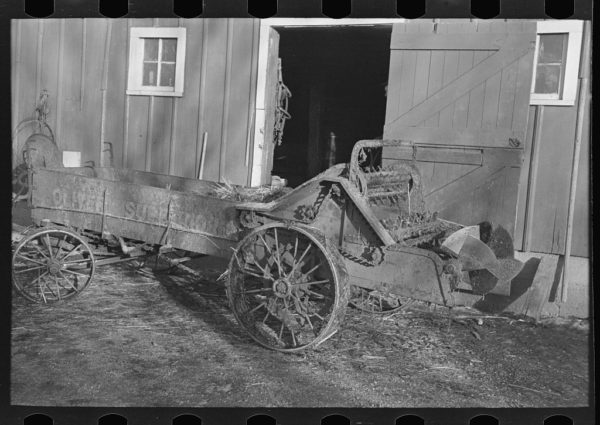
A manure spreader in Emmet County, December 1936. Photo by Russell Lee, courtesy of the Library of Congress, LC-DIG-fsa-8a21429
By Cheryl Mullenbach
That was a question asked by farmers in 1920.
Scientists at the Iowa State College Agricultural Experiment Station in Ames had an answer. After testing several soil types throughout the state to find an answer to the critical question, the answer was $6.96 per ton.
The scientists found that all crops were improved with the use of manure. They determined that the corn yield was increased 11.4 bushels per acre by the application of eight tons of manure once in a four-year rotation of corn, oats and clover. With corn at $1.40 per bushel, that meant an increase of $15.96 per acre with the application of the smelly stuff. On the same soils the oat crop increased 17.1 bushels per acre which amounted to an increase of $13.68 per acre. (Oats were selling for 80 cents per bushel.) And clover increased in yield by $10.05 per acre. The researchers concluded that the total increase in yield with the use of eight tons of manure over the four-year period amounted to $55.65, making one ton of manure worth $6.96. (The dollar in 1920 was the equivalent of about $12.42 in current value — considering inflation rates over the years.)
The researchers added that with proper care in storing, manure could return as much as “85 percent of the plant food taken from the soil by the crops …” However, they predicted, in time the addition of artificial fertilizers would become necessary.
TO READ THE ENTIRE STORY AND OTHER FASCINATING STORIES ABOUT IOWA HISTORY, subscribe to Iowa History Journal.
